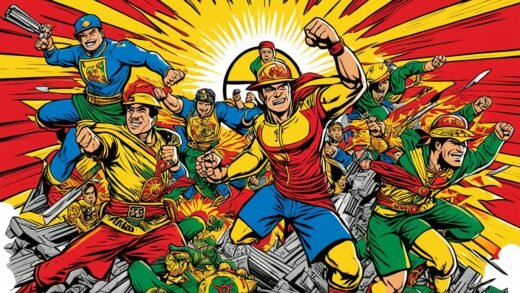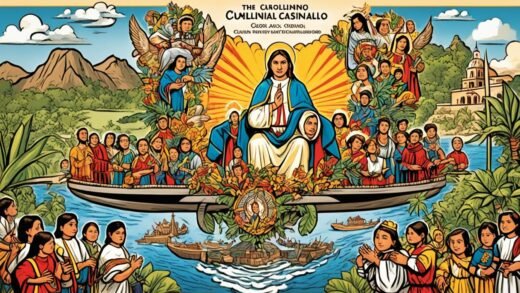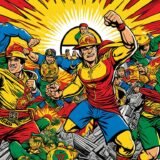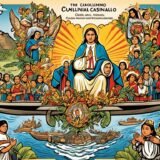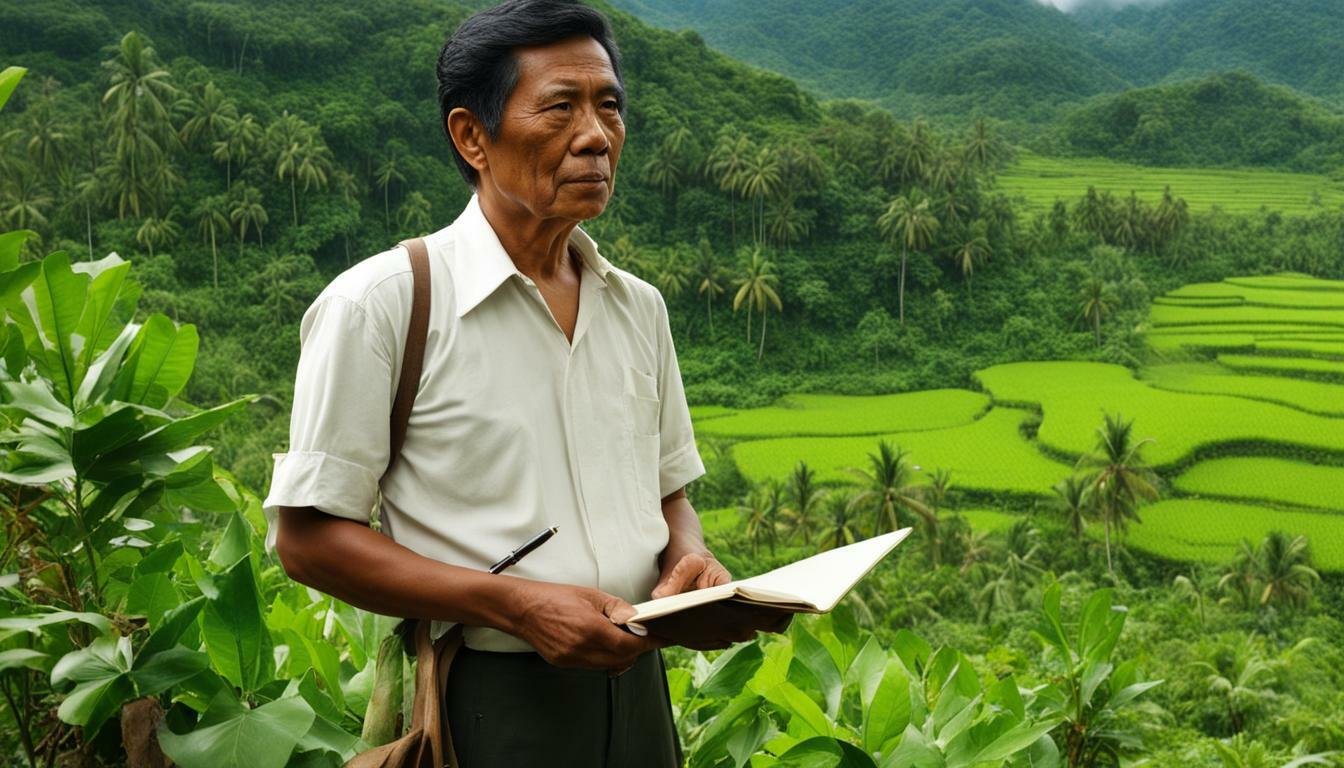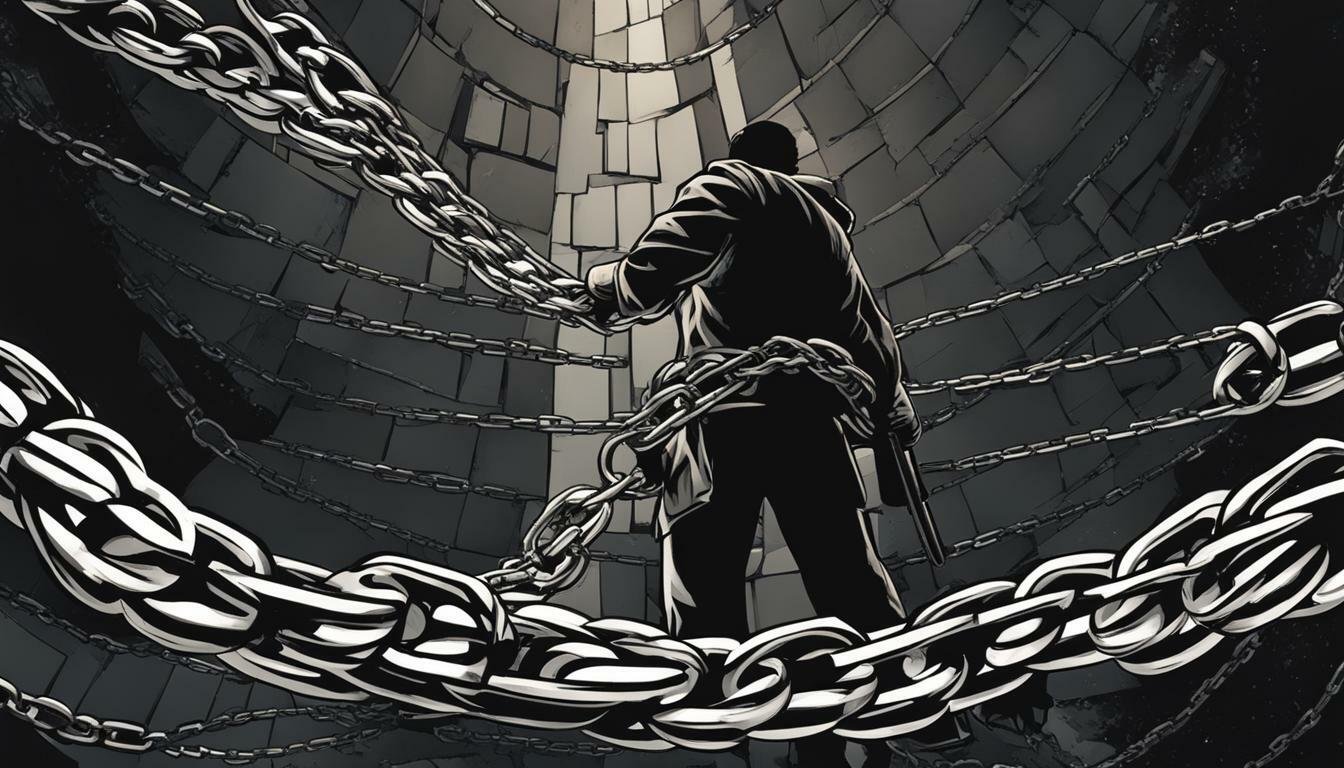Sergio Osmeña: The 4th President of the Philippines
Did you know that Sergio Osmeña served as the fourth President of the Philippines from 1944 to 1946? Born on September 9, 1878, in Cebu City, Osmeña was a prominent figure in Philippine politics, known for his leadership during World War II and his contributions to the Nationalist Party. His presidency was marked by his continuity of Manuel L. Quezon’s legacy and his commitment to rebuilding the country after the war. Let’s dive deeper into the life, achievements, and lasting legacy of Sergio Osmeña.
Key Takeaways:
- Sergio Osmeña served as the fourth President of the Philippines from 1944 to 1946.
- He was a key figure in Philippine politics, with roles such as governor of Cebu, Speaker of the Philippine Assembly, and Senator.
- Osmeña’s presidency was marked by his continuity of Manuel L. Quezon’s legacy and his leadership during World War II.
- He implemented economic and social policies aimed at rebuilding the country and improving the lives of Filipinos.
- Sergio Osmeña played a vital role in the fight for Philippine independence and is considered one of the most influential leaders in Philippine history.
Introduction to Sergio Osmeña’s Presidency
Sergio Osmeña’s presidency began in 1944, following the death of President Manuel L. Quezon. At the age of 65, Osmeña became the oldest person to assume the Philippine presidency until Rodrigo Duterte took office in 2016.
Osmeña’s presidency was marked by his continuity of Quezon’s reforms and his leadership during the challenging times of World War II. He implemented economic and social policies aimed at rebuilding the country and improving the lives of Filipinos.
Throughout his presidency, Sergio Osmeña demonstrated strong leadership and a commitment to the welfare and progress of the Filipino people.
Early Years of Sergio Osmeña
Sergio Osmeña, the fourth President of the Philippines, was born on September 9, 1878, in Cebu City, Philippines. He came from a distinguished background, with his father, Don Antonio Sanson, being a wealthy Chinese mestizo businessman, known for his extensive landholdings in Cebu. His mother, Juana Osmeña y Suico, belonged to a respected family. Interestingly, Sergio Osmeña took on his mother’s surname as he was considered illegitimate due to his father’s marriage to another woman.

Education and Early Career
During his early years, Sergio Osmeña received a good education, which laid the foundation for his future achievements. He attended the Ateneo Municipal de Manila, known for its rigorous academic standards. Osmeña showed promise as a student and graduated cum laude.
After completing his education, Sergio Osmeña began his early career in law and politics. He pursued a successful legal career, ranking second in the 1903 bar examination. As a lawyer, he passionately advocated for the rights and welfare of the Filipino people.
Osmeña’s political career took off when he was appointed as the governor of Cebu in 1904. He served in this position for three years, gaining valuable experience and establishing himself as a capable and influential leader. From there, he was elected as a member of the Philippine Assembly and eventually became its first Speaker.
Historical Photo of Sergio Osmeña’s Early Years
Osmeña’s early years laid the groundwork for his future political achievements and demonstrated his commitment to public service. His education and early career experiences shaped his values and prepared him for the leadership roles he would undertake later in life.
Sergio Osmeña’s Rise in Politics
Sergio Osmeña’s political career began with his appointment as governor of Cebu in 1904. Serving in this position until 1907, Osmeña established himself as a capable leader and gained valuable experience in governance. His tenure as governor laid the foundation for his rise in national politics.
In 1907, Osmeña was elected as a member of the Philippine Assembly, marking the beginning of his national political career. His election to the Assembly showcased his growing influence and popularity among the Filipino people. Recognized for his intellect, leadership, and dedication, Osmeña quickly rose to prominence and became the first Speaker of the Philippine Assembly.
As Speaker, Osmeña played a pivotal role in the legislative process, leading the assembly in deliberating and passing important laws. He championed transformative legislation that aimed to improve the lives of the Filipino people. However, some of his proposed bills faced opposition from American superiors in the Philippine Commission, highlighting the challenges Osmeña confronted in pursuing his reform agenda.
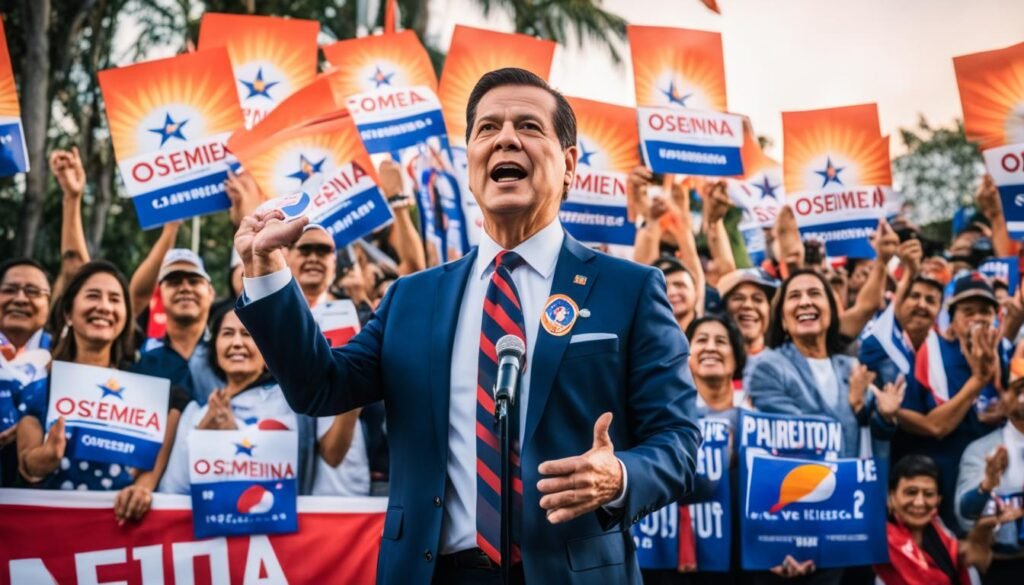
The Founding of the Nacionalista Party
Sergio Osmeña played a key role in the founding of the Nacionalista Party, which would come to dominate Philippine politics. He collaborated closely with Manuel L. Quezon, forming a strong political alliance that would shape the direction of the party and the country.
Political Innovations and Reforms
Under the leadership of Quezon and Osmeña, the Nacionalista Party implemented political innovations and reforms aimed at empowering the Filipino people and pushing for greater autonomy from American colonial rule. These reforms sought to address the needs and aspirations of the Filipino populace, focusing on economic development, social welfare, and political inclusion.
Collaboration with Manuel L. Quezon
The collaboration between Sergio Osmeña and Manuel L. Quezon was instrumental in shaping the goals and principles of the Nacionalista Party. Through their combined efforts, they forged a strong political force that garnered massive support and worked towards the common objective of advancing the interests of the Filipino people. Together, they laid the groundwork for a new era of political leadership and played a pivotal role in the course of Philippine history.
Sergio Osmeña’s Congressional Career
Sergio Osmeña had a distinguished congressional career that spanned several decades and encompassed various positions of leadership. He served in the Philippine Assembly, the Philippine Senate, and the Philippine House of Representatives, playing a critical role in shaping Philippine legislation and advocating for pro-Filipino policies.
Throughout his time in Congress, Osmeña demonstrated his deep understanding of the workings of the Philippine government, utilizing his extensive experience to effectively lead and influence political discourse. His expertise and commitment to pushing for reforms contributed significantly to the development of the country.
Osmeña’s congressional career was marked by his unwavering dedication to serving the Filipino people and advancing their interests. His contributions to the legislative branch of government played a vital role in shaping the policies and laws that would impact the nation’s progress and development.

Vision and Contributions as Senate President Pro Tempore
Sergio Osmeña held the esteemed position of Senate President Pro Tempore, which bestowed upon him significant influence and responsibility. During his tenure in this role, Osmeña made remarkable contributions to various initiatives and undertook crucial missions on behalf of the Philippine government.
The OsRox Mission to Washington D.C.
One of Osmeña’s notable accomplishments was the OsRox Mission to Washington D.C. This mission aimed to secure the passage of the Hare–Hawes–Cutting Independence Bill, which would grant the Philippines its long-awaited independence. While this bill was ultimately vetoed, it paved the way for subsequent legislation that would be instrumental in the journey towards independence.
Influence on the Tydings–McDuffie Act
Osmeña’s influence extended to the Tydings–McDuffie Act, a significant legislation that granted the Philippines independence and provided a framework for the transition of power. Through his strategic and diplomatic efforts, Osmeña played a crucial role in shaping this historic act, which marked a turning point in Philippine history.
Overall, Sergio Osmeña’s vision and contributions as Senate President Pro Tempore underscore his dedication to the progress and autonomy of the Philippines, leaving an indelible mark on the nation’s path to independence.
“Lawyer, Soldier, Statesman”: Osmeña’s Varied Roles
Sergio Osmeña is often described as a “lawyer, soldier, statesman” due to his diverse roles and contributions. As a lawyer, Osmeña had a successful legal career and ranked second in the 1903 bar examination. He used his legal expertise to advocate for the rights and welfare of the Filipino people and played a significant role in shaping Philippine legislation.
The Vice Presidency Under Quezon
Sergio Osmeña had a significant role as Vice President under Manuel L. Quezon, the first president of the Philippine Commonwealth. During his time in office, Osmeña formed crucial political alliances and held various administrative positions within the government.
Political Alliances and Administration Roles
As Vice President, Osmeña forged important political alliances that helped advance the interests of the Philippine Commonwealth. These alliances enabled him to effectively contribute to the policymaking process and advocate for the welfare of the Filipino people.
Additionally, Osmeña took on various administration roles, including serving as the secretary of public instruction, health, and public welfare. In these capacities, he played a vital role in shaping policies that aimed to improve education, healthcare, and the overall well-being of the Filipino population.
World War II and Government-in-Exile
World War II presented significant challenges for the Philippine government, as the country faced invasion by Japanese forces. In response to the occupation, the government-in-exile was established to ensure the continuity and legitimacy of Philippine governance.
During this tumultuous period, Sergio Osmeña played a pivotal role in leading the government-in-exile. He spearheaded efforts to resist the Japanese occupation and safeguard the interests of the Filipino people. His leadership during World War II demonstrated resilience, determination, and a commitment to preserving Philippine sovereignty.
| Alliance/Role | Description |
|---|---|
| Political Alliances | Formed crucial alliances for the advancement of Philippine interests |
| Secretary of Public Instruction | Played a key role in shaping education policies |
| Secretary of Health | Contributed to the improvement of healthcare services |
| Secretary of Public Welfare | Advocated for the well-being of the Filipino people |
Ascension to the Presidency
Sergio Osmeña assumed the presidency of the Philippines following the death of President Manuel L. Quezon in 1944. As the fourth President of the Philippines, Osmeña sought to continue Quezon’s legacy and build upon the reforms and initiatives established during his predecessor’s tenure. Osmeña’s presidency was characterized by his commitment to the continuity of Quezon’s vision for the country, ensuring a seamless transition of leadership and the preservation of the nation’s progress.
“I consider it my duty to proceed unswervingly along the path marked by President Quezon. I am entirely convinced that our people are agreed on the basic national objectives which he so untiringly championed throughout his career. I purpose to continue them, whether in the fulfillment of our constitutional obligations to the United States or in the shaping of our national destiny.”
Leadership During Turbulent Times
Osmeña’s presidency was marked by his strong leadership during turbulent times, particularly in the aftermath of the Japanese occupation during World War II. Guided by a deep sense of duty and determination, Osmeña played a pivotal role in rebuilding the country and leading the Filipino people towards a brighter future.
Under Osmeña’s leadership, the Philippines faced the challenges of rebuilding a war-torn nation and addressing the needs and aspirations of its citizens. Despite the immense difficulties, Osmeña remained steadfast in his commitment to national unity and progress.

| Challenges Faced | Key Actions Taken |
|---|---|
| Reconstruction of infrastructure | Implemented initiatives to repair and rebuild damaged infrastructure, focusing on roads, bridges, and public facilities. |
| Economic recovery | Introduced policies to stimulate economic growth and encourage investments in key industries. |
| Social welfare | Implemented programs to address the needs of war victims, including provisions for healthcare, housing, and livelihood support. |
| National reconciliation | Promoted unity and reconciliation among different sectors of society, fostering a spirit of cooperation and understanding. |
Through his steady and decisive leadership, Osmeña guided the nation through the turbulent aftermath of World War II, laying the foundation for a newly restored and revitalized Philippines.
World War II and Its Impact on Osmeña’s Presidency
Sergio Osmeña’s presidency coincided with the challenges and devastation brought forth by World War II. The war had a profound impact on Osmeña’s presidency, as the Philippines experienced Japanese occupation and widespread destruction.
During this tumultuous period, Osmeña played a critical role in leading the Philippine government-in-exile and resisting the Japanese occupation. With resilience, determination, and a commitment to rebuilding the country, he guided the Filipino people through one of the darkest chapters in their history.
The experiences of World War II left an indelible mark on Osmeña’s presidency, shaping his policies and priorities in the post-war era. He understood the urgency of restoring the nation and worked tirelessly to rebuild the Philippines and improve the lives of its citizens.
Through his leadership, Osmeña sought to heal the wounds and rebuild the nation, focusing on economic recovery, social welfare programs, and infrastructural development. He was steadfast in his commitment to restoring the Philippines to its former glory and ensuring a brighter future for its people.
The impact of World War II on Osmeña’s presidency cannot be overstated. It tested his leadership skills, resolve, and determination. Despite the immense challenges, he remained resolute in his commitment to the Filipino people, and his legacy continues to inspire and influence the generations that followed.
The Legacy of Sergio Osmeña
Sergio Osmeña’s presidency had a significant impact on the Philippines, but his legacy extends beyond his time in office. He implemented economic and social policies that continue to shape the country today.
Economic and Social Policies
One of Sergio Osmeña’s key accomplishments was his focus on economic recovery and development. He understood the importance of promoting agricultural productivity, industrialization, and infrastructure development to drive the country’s progress. By investing in these areas, he laid the foundation for economic growth and prosperity in the years that followed.
Osmeña also prioritized social welfare programs and initiatives to support marginalized sectors of society. He recognized the importance of uplifting and empowering the most vulnerable communities and worked to improve their quality of life. Through various policies and programs, he aimed to create a more inclusive and equitable society for all Filipinos.
Post-Presidency and Historical Recognition
Even after his presidency, Sergio Osmeña remained an influential figure in Philippine politics and society. His dedication to public service and his contributions to the country’s progress were widely recognized and celebrated.
Osmeña received numerous accolades and historical recognition for his leadership and achievements. His legacy as a statesman and advocate for the Filipino people continues to inspire future generations of leaders in the Philippines.
Notable Legislation During Osmeña’s Tenure
Sergio Osmeña’s presidency was marked by the passage of several notable pieces of legislation that aimed to improve various aspects of Philippine society. These laws and policies focused on economic development, social welfare, and political reforms, reflecting Osmeña’s commitment to the progress and welfare of the Filipino people.
One significant area of legislation during Osmeña’s presidency was labor laws. These laws aimed to protect the rights of workers, improve working conditions, and promote fair labor practices. They were crucial in ensuring the well-being and rights of Filipino workers, laying the foundation for a more equitable and just labor system.
Another important aspect of legislation during Osmeña’s tenure was the implementation of housing programs. These programs aimed to address the housing needs of the Filipino population, particularly the marginalized sectors. They aimed to provide affordable and decent housing options, contributing to improved living conditions and uplifting the lives of many Filipinos.
Educational reforms were also a priority during Osmeña’s presidency. These reforms aimed to enhance the Philippine education system, improve access to quality education, and provide educational opportunities for all Filipinos, regardless of their socioeconomic background. They aimed to equip the Filipino youth with the necessary knowledge and skills to contribute to the nation’s development.
These significant pieces of legislation enacted during Osmeña’s presidency shaped the trajectory of Philippine society, addressing key issues and promoting progress in various sectors. They reflected Osmeña’s vision for a more inclusive and prosperous Philippines, and their impacts continue to be felt in the country’s development today.
Sergio Osmeña’s Family and Descendants
Sergio Osmeña came from a prominent family in Cebu. He was married to Estefania Chiong Veloso until her death in 1918, and later remarried Esperanza Limjap in 1920. Osmeña had a total of 13 children, including Sergio Osmeña Jr., who also had a successful political career. The Osmeña family remains influential in Philippine politics, with descendants like Sergio Osmeña III and John Henry Osmeña having served as senators. The family’s contributions to the country’s history and politics have solidified their place as one of the most prominent political dynasties in the Philippines.
Sergio Osmeña’s Contribution to Philippine Independence
Sergio Osmeña played a crucial role in the fight for Philippine independence and the establishment of the Commonwealth Government. He was a staunch advocate for Philippine sovereignty and worked tirelessly to secure greater autonomy from American colonial rule. Osmeña’s collaboration with Manuel L. Quezon, the first President of the Philippine Commonwealth, was instrumental in advancing the cause of independence.
Advocacy for Sovereignty
Throughout his political career, Sergio Osmeña consistently pushed for the recognition of Philippine sovereignty. He staunchly defended the rights of the Filipino people and championed their aspirations for self-determination. Osmeña understood the importance of liberating the Philippines from colonial rule and dedicated himself to the fight for independence. His unwavering advocacy played a vital role in raising international awareness and support for the Philippine cause.
Role in Commonwealth Government
As a key figure in the Commonwealth Government, Sergio Osmeña contributed significantly to the establishment of self-governance in the Philippines. Serving as the Vice President under Quezon, he actively participated in shaping the policies and institutions that laid the groundwork for an independent Philippines. Osmeña’s leadership and expertise were crucial in navigating the complexities of governance during a time of turbulent political and social change.
The image shows Sergio Osmeña, a prominent leader in the fight for Philippine independence and the establishment of the Commonwealth Government.
The 1946 Presidential Elections
The 1946 presidential elections marked the end of Sergio Osmeña’s presidency. He ran for re-election against his former ally, Manuel Roxas. The elections were highly contested and resulted in Roxas’s victory. Although Osmeña lost, his contribution to Philippine politics and his leadership during challenging times were widely recognized and respected. The 1946 presidential elections marked a turning point in Philippine history and set the stage for the new era of the independent Republic of the Philippines.
Conclusion
Sergio Osmeña’s dedication to public service and his commitment to the welfare of the Filipino people have shaped his life and legacy. As the fourth President of the Philippines, Osmeña played a pivotal role in the country’s history and development. From his early years in Cebu to his various roles in politics and government, Osmeña left an indelible mark on Philippine society.
Osmeña’s legacy is defined by the economic policies and social reforms he implemented during his presidency. He prioritized initiatives aimed at rebuilding the country and improving the lives of Filipinos. Osmeña’s leadership during World War II and his contributions to Philippine independence further solidify his place in history. His efforts continue to inspire and influence future generations of Filipino leaders.
Sergio Osmeña’s impact extends beyond his time in office. His dedication to public service and his commitment to the progress of the Filipino people serve as a reminder of the importance of strong leadership. As the Philippines moves forward, Osmeña’s legacy remains a guiding force, inspiring current and future leaders to strive for the betterment of the nation.







